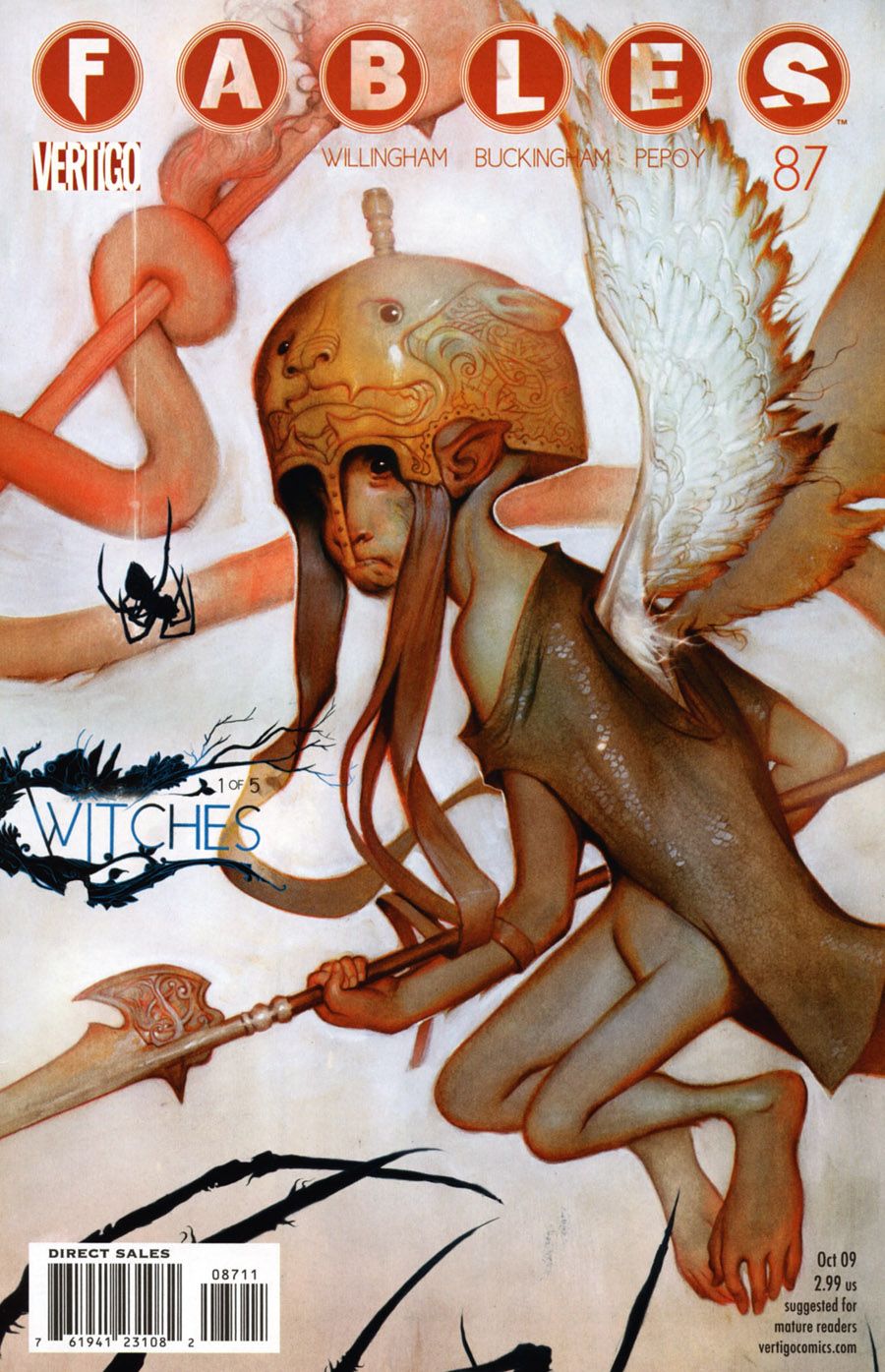I'll admit that I was a tiny bit worried when "Fables" started running "The Great Fables Crossover" between it, "Jack of Fables," and "The Literals." For three months it felt like everything was being put on hold for a "Jack of Fables" storyline, and considering the book is still setting up its post-War status quo, it came at a bad time. Last month's origin of Master Dark was definitely a step in the right direction, though, and this month Bill Willingham is showing that there's a lot of life still left in "Fables."
I can't help but wonder how many other readers also got to the start of this issue, with the reminder that others were trapped in the Fabletown main office when their enclave collapsed, and winced because they'd forgotten all about the characters. To be fair, Bufkin the winged monkey, the head of Frankenstein's Monster, and the Magic Mirror are hardly headlining characters. Or at least, they weren't up until now. Willingham in his typical fashion is turning the series on its head a bit, here, and moving these ultra-minor characters into the spotlight. It's a basic disaster thriller model, with the good and bad guys equally trapped inside a closed location. I like that Willingham has armed his good guys with nothing more than a source of knowledge, while the villain is certainly one of the most powerful ones that graced "Fables" to date.
At the same time, there are other threads weaving their way through the new story, something that Willingham's always been good about juggling. Willingham digging up the idea of magical transition from one witch to the next fits in well with the basic idea of "Fables," and seeing what both Ozma and Frau Totenkinder have in store is one of the more promising ideas that's shown up in the series, post-War. It's certainly full of symbolism about the shifting from one era to the next, but it doesn't feel heavy-handed and is a graceful, natural way to shift in some new characters to keep things fresh.
Of course, Mark Buckingham and Andrew Pepoy provide their typically strong art. Buckingham's rounded faces and figures are always attractive, and in terms of page structure it's hard to beat Buckingham. I like that even he isn't afraid to break his own rules from time to time; something as simple as the horizontal bar that crosses not only the main panels but even his typical frame gutters on either side instantly jumps out as a visual marker that we're shifting into a flashback, for example. It's a simple but effective way to get the reader's attention, and I appreciate that Buckingham's carefully thought his layouts through in a way that is not only decorative, but helpful to the reader.
I know that many readers were worried that post-War "Fables" might have lost its spark. Trust me when I say that this issue (and last month's) are proof that Willingham's definitely still got it. I'm not sure that the Master Dark story can maintain its own 75-issue run, but for now it's got what it takes to keep everything moving.

